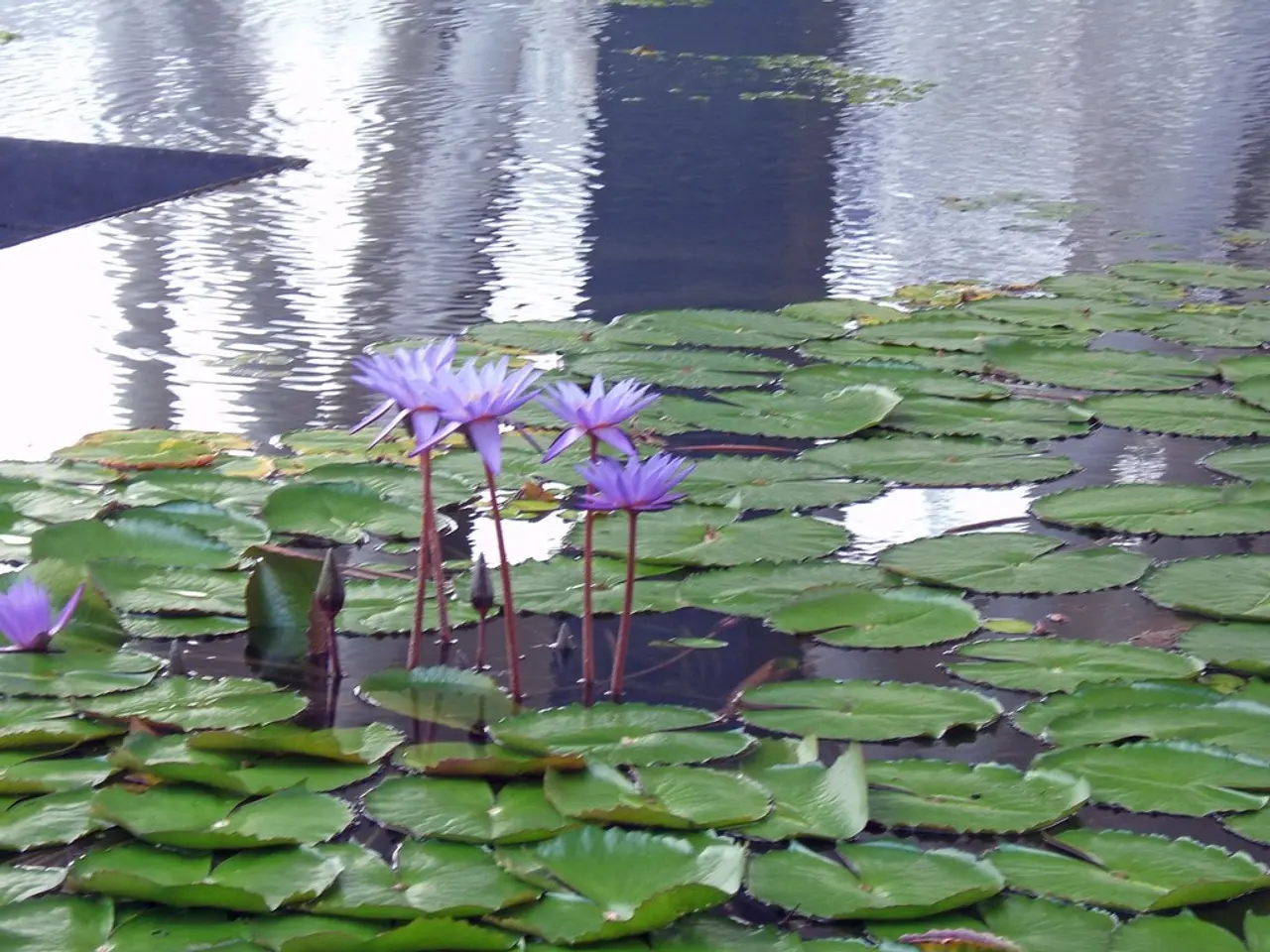Orchids' Optimal Humidity Levels for Growth and Methods to Enhance Moisture
Orchids, with their exotic blooms, are prized additions to any home. However, these tropical plants require specific conditions to thrive, including regular watering, compatible light, temperature levels, and humidity.
The ideal humidity range for most common house orchids, such as Phalaenopsis, is between 40-70%. Most orchids prefer a slightly higher humidity, around 50-70%. For moisture-loving orchids like Vandas and Bulbophyllums, aim for even higher humidity, around 65-70%.
To maintain this balance, you can use tools like humidifiers, humidity trays with water and pebbles, or regular misting. Grouping orchids close together can also help raise the ambient humidity.
Vanda orchids particularly love high humidity and benefit from daily watering and a humid environment. Bulbophyllum orchids prefer warmth, moisture, and shaded environments, so relatively high humidity and consistent moisture are important.
To ensure proper water absorption, use well-draining potting media such as orchid bark or sphagnum moss. Consider orchid-specific pots with drainage and ventilation holes for a healthy root environment.
Monitoring humidity and temperature is crucial. Orchids generally prefer 65-80°F while blooming and benefit from slightly cooler nights.
Avoid low humidity (<40%), which can cause dehydration, bud blast (budding failure), and leaf shriveling. Spraying orchids with water is not the best solution to address their humidity needs as it only temporarily raises humidity levels and can cause water to collect in the leaves.
A humidifier can also be used to raise humidity levels, but it should be near the plants and used with caution to prevent crown rot. One easy way to raise humidity levels around a plant is by using a pebble tray.
Winter and summer seasons, with heating systems and air conditioning respectively, can further lower the humidity levels. Cattleya orchids require a minimum of 50% humidity, while Phalaenopsis need a minimum of 50%. Vanda orchids need a minimum of 65% humidity, and Dendrobium orchids tolerate less humidity and need at least 40%.
Terrestrial orchids get most of their water through the soil. The roots of epiphyte orchids are exposed to the air and need humid conditions to absorb water. Most orchids are tropical epiphytes that evolved to grow in warm, moist climates.
The air in homes tends to be dry, with humidity as low as 25%, making it a serious issue when growing orchids as houseplants.
In sum, maintain high but balanced humidity (50-70%), tailored slightly higher for moisture-loving orchids like Vandas and Bulbophyllums, use humidifiers or trays for moisture, provide good airflow and drainage, and avoid prolonged dry air that stresses the plants.
For more tips and advice on orchid care, consider following gardening experts like Mary Ellen Ellis, a specialist in flowers, native plants, and herbs, Amy Draiss, the Digital Community Manager, and Melanie Griffiths, the Editor in Chief.
Incorporating home-and-garden practices, one can enhance the home-lifestyle by providing an optimal environment for growing orchids, such as using humidifiers or humidity trays to maintain ideal humidity levels (50-70%) in the home, especially for moisture-loving orchids like Vandas and Bulbophyllums that require even higher humidity. Regularly monitoring humidity and temperature is essential for the health and blooming of these tropical plants.




